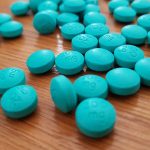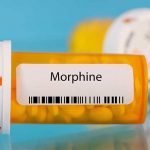- Morphine Street Prices
- Vs. The Retail Price
- Vs. Other Opioids
- Risks Of Buying Morphine On The Street
Morphine sulfate, or morphine, is a prescription drug used to treat moderate to severe pain. As an opioid analgesic, it provides acute and chronic pain relief by attaching to opioid receptors throughout the body.
Morphine is prescribed under various brand names, including Kadian, MS Contin, and Roxanil.
Like other opioids, morphine often appears on the illegal drug market, where its price varies.
Morphine Street Prices
The average street price of morphine ranges between $10 and $80 per tablet. The exact price depends on dosage and location.
Dosage
Morphine comes in three main formulations: an immediate-release tablet, an extended-release tablet, and an oral solution.
Both immediate-release and extended-release morphine tablets are available in 15mg or 30mg dosages. In general, 15mg tablets cost less than 30mg tablets.
The oral solution usually costs between $20 and $40 per 100 milligrams.
Location
Morphine likely costs less the closer you live to a city. That’s because cities tend to have higher supplies of morphine and other street drugs. Higher supply usually leads to lower prices.
The Street Price Of Morphine Vs. The Retail Price
Morphine’s retail price is much lower than its street price. The exact retail price varies depending on the dose and pharmacy.
A 90-day supply of 15mg morphine tablets likely costs about:
- $55 at CVS
- $80 at Price Chopper
- $90 at Hannaford
- $60 at Shaws
- $90 at Wegmans
A 90-day supply of 30mg morphine tablets likely costs about:
- $70 at CVS
- $100 at Price Chopper
- $90 at Hannaford
- $85 at Shaws
- $150 at Wegmans
The Street Price Of Morphine Vs. The Street Price Of Other Opioids
The street price of morphine is similar to the street price of many other opioids. For example, in general, fentanyl costs about $40 per tablet, hydromorphone costs about $30 per tablet, and oxycodone costs about $20 per tablet.
However, some opioids are much cheaper than morphine. For example, tramadol only costs about $2 per tablet.
Risks Of Buying Morphine On The Street
You should only use morphine as prescribed by your health care provider for pain management. If you buy it on the street and abuse it, you’ll face serious health risks, including increased side effects, addiction, and overdose.
Increased Side Effects
The most common side effects of morphine include:
- dry mouth
- headache
- constipation
- trouble urinating
- stomach pain
- drowsiness
- anxiety
Some people also have an allergic reaction to morphine, which can cause issues like rash, chest tightness, and swelling of the face, mouth, lips, tongue, or throat.
In addition, if you use morphine while breastfeeding, the drug may have adverse effects on your baby.
Overdose
Morphine is a central nervous system (CNS) depressant. That means it slows down your breathing. If you take too much morphine, your breathing may slow to the point of respiratory depression and overdose. Other signs of a morphine overdose may include:
- pale, clammy skin
- bluish lips and/or fingernails
- slow heartbeat
- sudden drop in blood pressure
- sedation (extreme drowsiness)
- loss of consciousness
If you or someone you know experiences these symptoms, call 911 right away. Also, administer naloxone if you have it. Naloxone (brand name Narcan) is a medication that can quickly reverse the effects of an opioid overdose. It’s available without a prescription at most pharmacies.
While morphine always poses a risk of overdose, the risk increases when you buy morphine on the street. That’s because some drug dealers secretly lace morphine with fentanyl, an opioid that’s about 50 to 100 times more powerful than morphine.
Addiction
Like other opioids, morphine is highly addictive. Morphine addiction is a serious disease that makes you feel unable to stop using the drug despite negative consequences. Other symptoms may include:
- loss of interest in activities once enjoyed
- avoidance of family and friends
- tolerance, which means you need increasingly larger or more frequent doses of morphine to feel the desired effects
- physical dependence, which means you experience unpleasant withdrawal symptoms, such as anxiety and nausea, when you don’t use morphine
People with morphine addiction should seek medical advice at a drug abuse treatment program. These programs offer recovery-focused services such as:
- medical detox, in which healthcare professionals will help you slowly and safely get morphine out of your system
- mental health counseling, in which a therapist will help you manage morphine cravings and cope with any stressors that led you to abuse morphine in the first place
- medication-assisted treatment, in which doctors prescribe FDA-approved medications to ease morphine cravings and withdrawal symptoms
- support groups, in which you can discuss your experiences with other people recovering from morphine addiction
If you or someone you love struggles with morphine, please contact Northeast Addictions Treatment Center. We provide a variety of personalized, evidence-based treatments to help you stay healthy and drug-free.
Sources
- Centers for Disease Control and Prevention — Fentanyl
- United States Association for the Study of Pain — Street prices of prescription opioids diverted to the illicit market: data from a national surveillance program
- United States Food and Drug Administration — Morphine Sulfate tablets label
- United States National Library of Medicine — Morphine
Written by
Northeast Addition Editorial Team
©2024 Northeast Addition Center | All Rights Reserved
This page does not provide medical advice.



